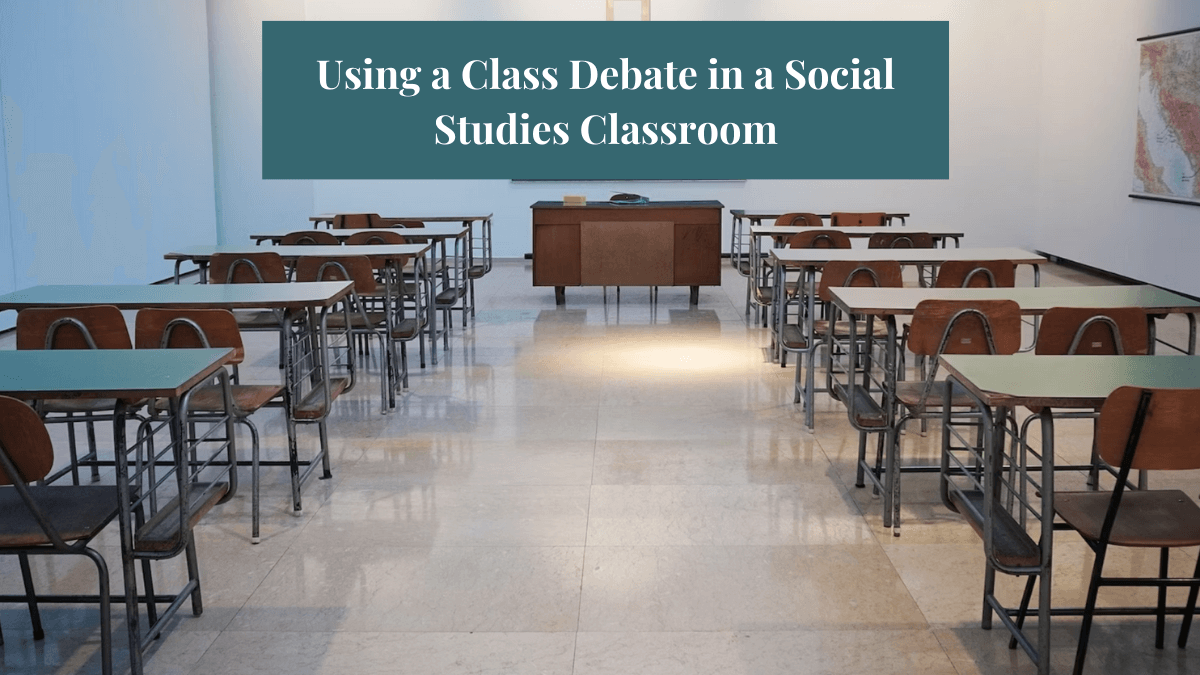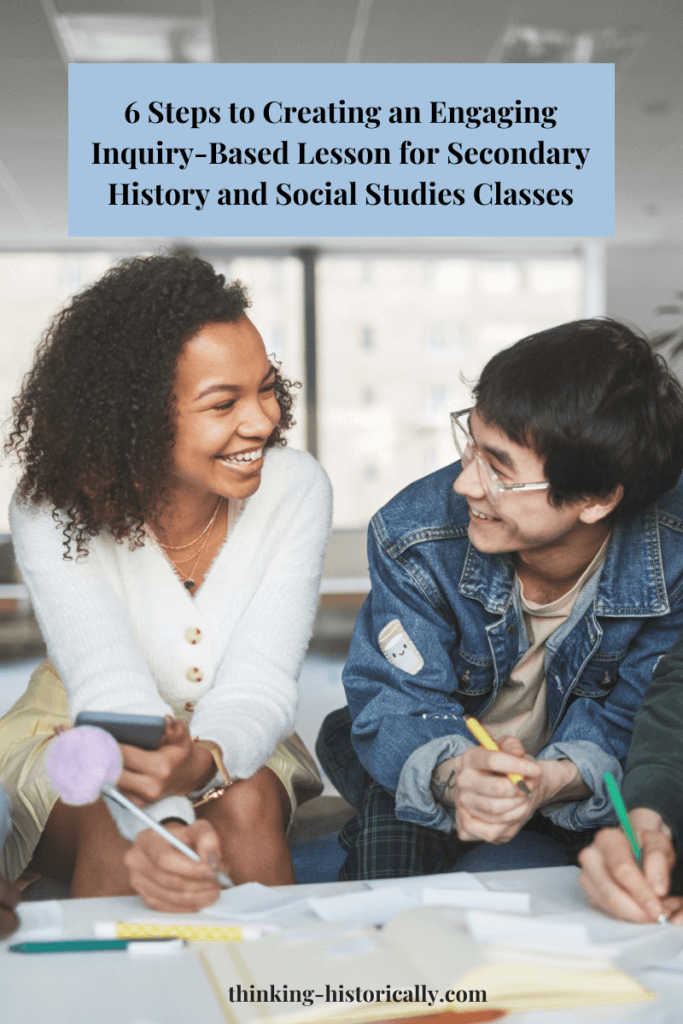As a secondary social studies teacher, you might be wondering how to incorporate a class debate into your curriculum. You might be a little afraid to implement a debate, especially if it is your first time (I know, I was!). I was reluctant at first, because I didn’t know how to prep my students for a debate or how to structure the debate. But using debate in the classroom isn’t as scary as it seems and in my experience, students love the opportunity to voice their opinions!
The good news is that if you’re a social studies teacher, you can turn any topic into a debate! Debates are great because they liven up your class and get students to think critically about arguments to support their side. When students are in debate teams, it is a great way for them to practice collaboration (an important skill in the workplace!).

When I first used a debate in my class, I wasn’t really sure what I was doing. I didn’t even know how it would turn out. I just decided to go for it and commit. The best part of the experience was that my students did well and actually enjoyed the activity! Phew!
Over the years, I’ve used debates in my class, especially in my government class (if you’re interested in a ready-to-use First Amendment Freedom of Speech class Debate that I’ve created, click here!).
So let’s get to the nitty gritty of how to set up a class debate!
Classroom Debate Topic
First, students need a topic to debate. The awesome news is that you can turn any topic in history into a debate by turning it into a question! For instance, if you’re teaching about McCarthyism, a debate question could be, “Should the government be able to violate people’s rights and liberties in order to protect society?” (If you’re interested, click here for a McCarthyism and Patriot Act Debate!). Another debate example question for the Second Industrial Revolution that students can debate is: “Was the Second Industrial Revolution good for immigrants?”

Another way to find debate topics is to Google current events. When I created my First Amendment Debate, I googled “First Amendment current event involving students.” The case I found involved a cheerleader who was upset about not making the varsity team so she took to social media to voice her opinions. You can read more about this case here. For this case, students debated the question, “Can public schools discipline students for free speech outside of the school supervised setting?”
Once you have your topic and debate question, students can start preparing arguments for their side!
Developing Arguments For Their Side
Now, for the fun part! Split students up into two teams. You can assign students into teams beforehand or have students choose their own teams. For my First Amendment debate, one team represented public schools and the other team represented the student.
Once students are in their teams, have them develop arguments for their side. I gave students a graphic organizer like the one below to help them keep track of their arguments.

For my class, I had students create at least 3 arguments and gave them 1-2 days of in-class work time to prepare arguments for their side.
Next, I had students work on a rebuttal to the opposing team’s arguments. Students used a graphic organizer, like the one below, to prepare their rebuttals. Again, I gave students 1-2 days of in-class work time to prepare their rebuttals.

By this point, students should almost be ready to participate in an in-class debate! You might be wondering what else they might need to prep?
Opening Statement
The last things students need to prep are their opening and closing statements. The good news is that students have already done most of the work!
For the opening statements, students just need to put their arguments together. Explain that their opening statements must include:
- A powerful hook that grabs the audience (quote, question, statistics, etc.).
- A statement in which they clearly identify your opposition in the debate.
- A MINIMUM of 3 arguments to support their position. Each argument should be supported by powerful evidence and facts.
- A concluding sentence or powerful statement that summarizes your position in a different or interesting way.
Since students have already completed most of the work, opening statements should only take 1 class period. If you’re running short on time, you can even assign the opening statement as homework.
Debate Activity Instructions
Now it’s time for students to participate in an in-class debate. Use the following structure for your class debate:
- Team A presents their opening statement (3 minutes)
- Team B presents their opening statement (3 minutes
- Rebuttal preparation (5 minutes)
- Team B presents their rebuttal (counter arguments) (3 minutes)
- Team A presents their rebuttal (counter arguments) (3 minutes)
- Audience asks either side questions (4 minutes)
- Team A presents their closing statement (2 minutes)
- Team B presents their closing statement (2 minutes)
- Optional: Judges deliberate (4 minutes)
- The audience will serve as the judges and will deliberate the winner based on the arguments presented during the debate
For my class, debates usually lasted 25 minutes. Debates are a great way to get students to “do” history and really help to sharpen their analytical skills!
(For a First Amendment debate that I created, click here. For a McCarthyism debate, click here).
Happy teaching!



One Response